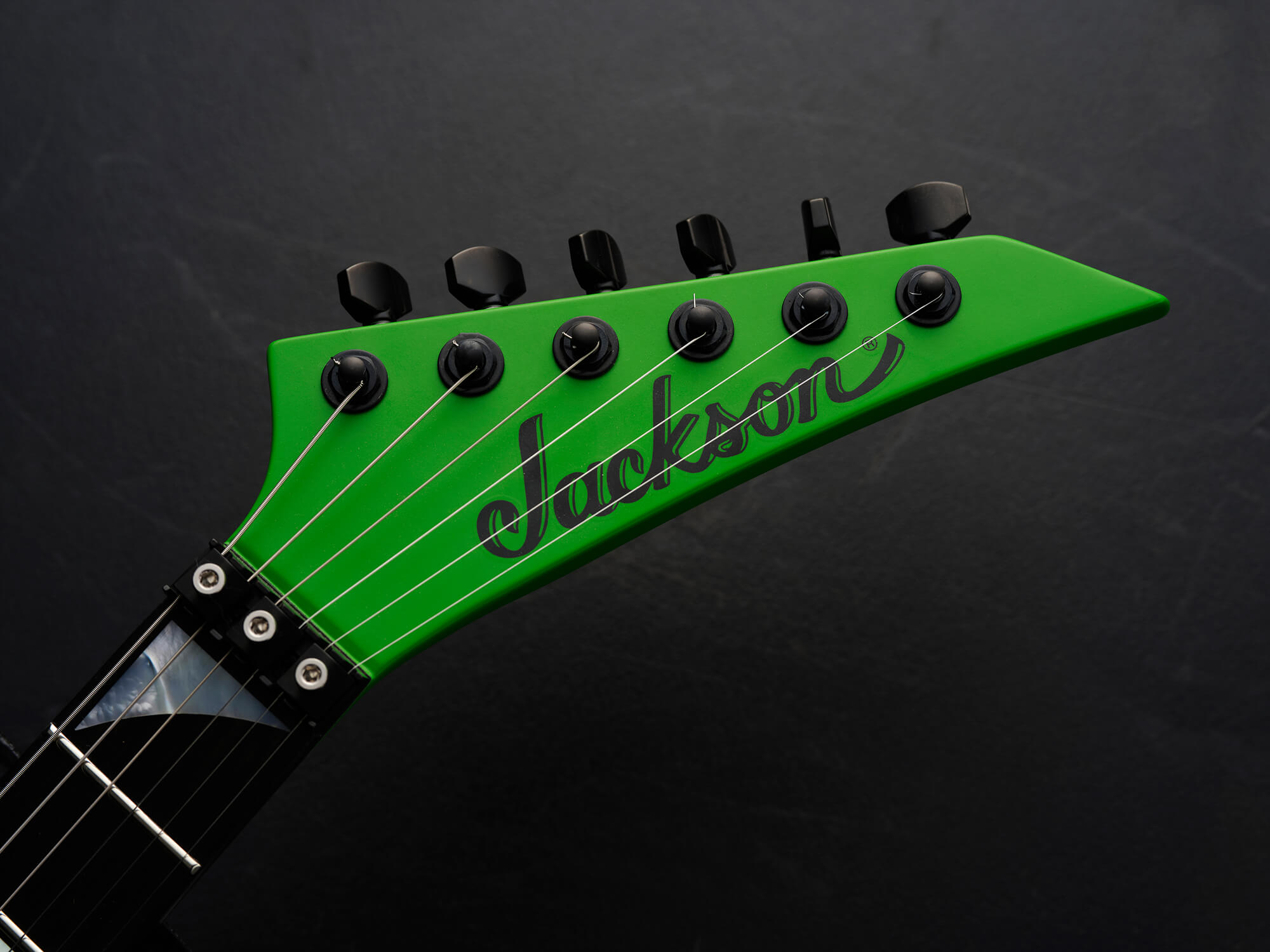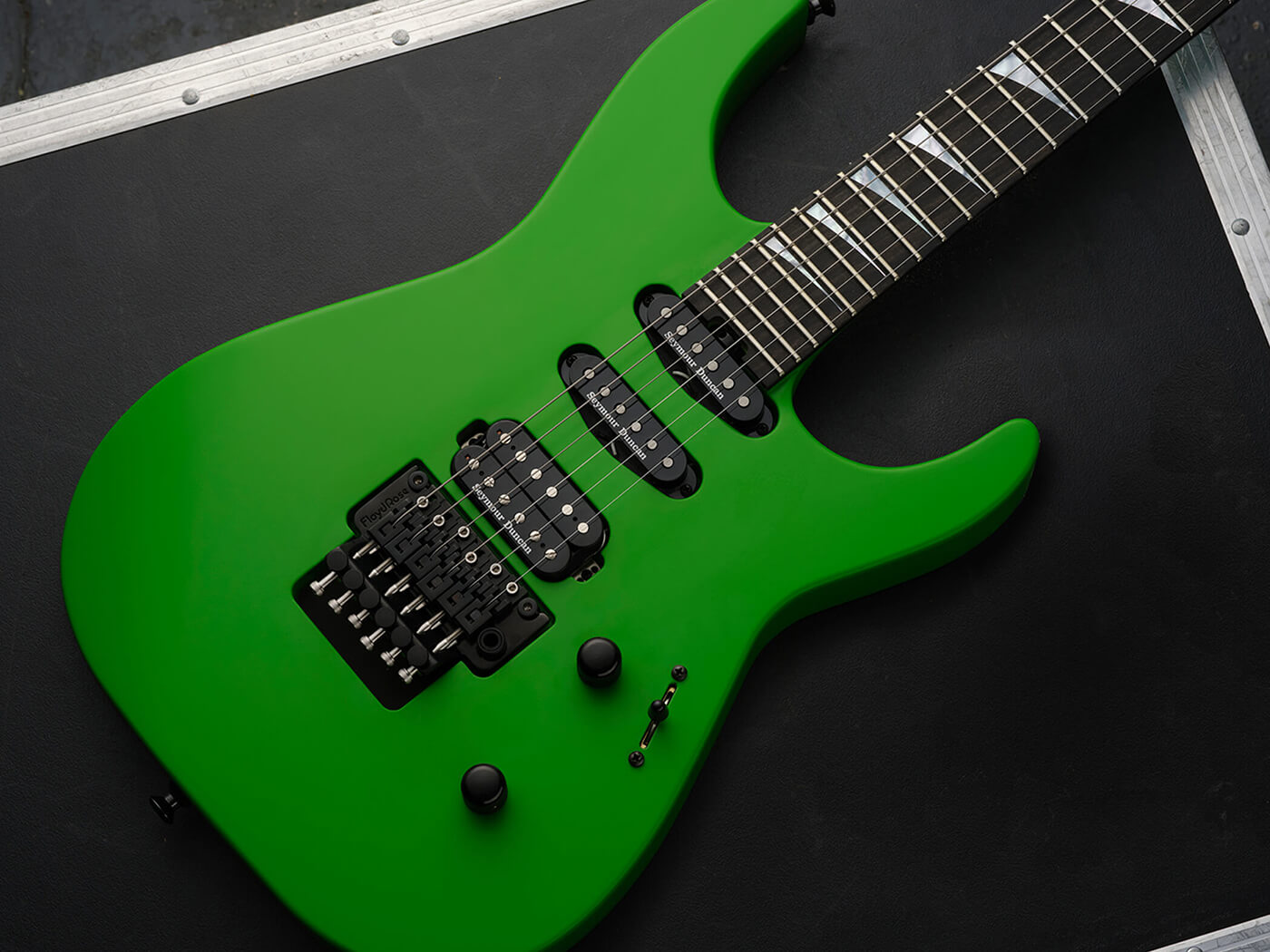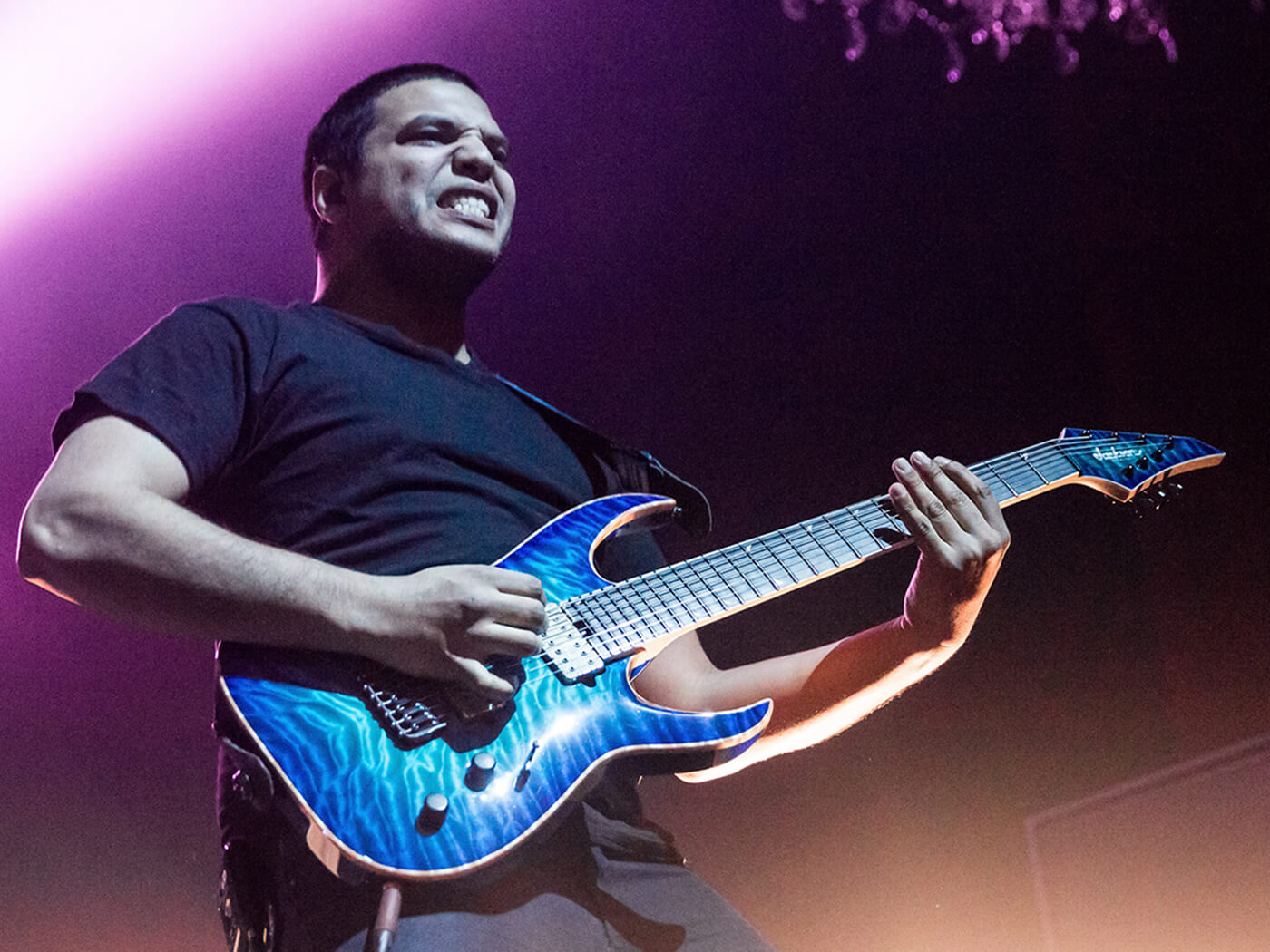Related Tags
A Brief History of Jackson Guitars
From its origins as a sub-brand created to try a wild prototype, to the modern king of shred and metal guitar, this is the story of Jackson

Jackson American Series Soloist SL3. Image: Adam Gasson
Jackson Guitars was founded in 1980 in Los Angeles County, California, and the timing could not have been better. The 80s would signal a renaissance of guitar culture in LA and across the USA, as glam metal (or hair metal as it’s sometimes known) became the dominant form of guitar music, and with it a demand for guitars that were sleeker, faster and pointier.
- READ MORE: A Brief History of Taylor Guitars
California wasn’t short of a good luthier or two before that of course – Fender, Rickenbacker and Mosrite had been in business for decades, while the likes of Alembic, Santa Cruz and Charvel were the new upstarts. In fact, the story of Jackson guitars begins with one of the new breed of Californian guitar makers – Charvel.
Charvel Guitars was founded by Wayne Charvel and primarily focused on repairs, custom finish work, and supplying replacement parts for Fender instruments. Eventually, a guy who worked at the repair shop named Grover Jackson suggested that Charvel begin assembling complete guitars to sell.
Thus the first Charvel guitars were assembled from wood parts made by Boogie Bodies (a Washington state maker of aftermarket bodies and necks that in the late 70s gave Jim Warmoth his start) and by another future guitar maker, Schecter, with various Charvel and after-market hardware.

It didn’t go well however, and in 1978 Charvel filed for bankruptcy – eventually selling what was left of the company, including the name, to Grover Jackson.
Jackson brought in a great team of luthiers and streamlined production and turned Charvel into a very reputable brand during through the 1980s. A big piece of the company’s income came from manufacturing guitar bodies for Mighty Mite, DiMarzio, BC Rich, and Music Man. Charvel was also famous for churning out various iterations of the SuperStrat design popularized by Eddie Van Halen. In fact, Eddie bought the Boogie Body for his iconic Frankenstrat at Wayne Charvel’s shop.
Among the talented luthiers to work at the Charvel Shop was Karl Sandoval, who built Eddie Van Halen’s Megazone and a polka dot flying V for a young guitarist named Randy Rhoads. Rhoads was in Quiet Riot when he commissioned the build of his iconic V, but received it around the same time he played his final show with the band – September of 1979.
Rhoads would leave Quiet Riot to join Ozzy Osbourne’s first solo endeavor, a decision that would have huge ramifications for the guitarist and for Jackson. Clearly happy with the work the Charvel shop had done for him on the V, Rhoads returned with an idea for a custom guitar. It seems very likely that Rhoads was intending to have Sandoval build his next guitar as well, but by this time, he had left the company to build his own guitars. So instead, he met Grover Jackson.

Rhoads brought in some rough sketches of an asymmetrical V body shape into the shop. He and Grover worked on details of the design that day – 23 December 1980. Jackson knew it was a project that he wanted to take on, but there was a problem.
By 1980, Charvel was well-known for its SuperStrat guitars with bolt-on necks, Jackson was concerned that building a radical, original take on a V design might affect the Charvel brand’s popularity or dilute the impact of its USP.
Instead Grover suggested, and Rhoads agreed, to put a different name on the headstock of this new guitar – his own. According to Jackson, he also came up with the new headstock design, which was a more aggressive modern take on an Explorer headstock, and a design that would later become a staple of the Jackson brand.
A prototype of the guitar was built, mostly by shop foreman, Tim Wilson. The guitar was completely built out of Pacific Coast Maple and featured a neck-through design. The neck, which joins the body at the 14th fret, had a compound radius that started at 12” at the nut, but became flatter as you ascend down the neck, down to a 16” radius. It featured a tremolo with a heavy brass sustain block, made by a guy named Bill Gerein.

The wiring was typical of a Gibson V and featured a Seymour Duncan Super Distortion at the bridge, and a Jazz in the neck position – the pickup bezels were also solid brass. The guitar was painted white with black pinstripes. The first prototype, forever to be known as ‘The Concorde’, was completed in early 1981 (February or early March according to Wilson). The guitar accompanied Rhoads on the remaining dates of the Blizzard of Ozz Tour with Ozzy.
The Concorde was allegedly so named because it looked like the supersonic airliner of the same name that Rhoads actually flew home from the UK aboard in late 1980.
A revamped second prototype [with a black finish] was completed on 27 December 1981, this one was built mostly by Mike Shannon and featured some changes from the first – the upper horn was extended to make the design stand out a bit more, as Randy was upset that people were asking him if he had simply cut up a Gibson V.
This version of the guitar also featured the now famous shark fin inlays that seemed to stylistically support the guitar’s new upper horn and its modern and aggressive design characteristics.

Randy tragically passed away in a plane crash on 19 March 1982, at the age of 25. Jackson had started production on four more guitars for Randy, modeled after the second prototype, but he passed away before they were completed.
The guitar that launched Jackson Guitars is still the flagship of the brand, now known simply as The Rhoads. In 2001, The Rhoads entered the rarest of echelons – a signature model that becomes so iconic it spawns its own signature models – when Alexi Laiho and Roope Latvala of Children of Bodom released signature versions of the Rhoads.
Jackson Guitars continued to grow as shred guitar evolved throughout the 80s and 90s, spawning distinctively designed Jackson models such as the Soloist, King V, Kelly, and the Dinky, all of which remain icons of the brand.
The company was acquired by Fender in 2002 and until recently the only Jacksons you could buy were affordable import guitars or high-end Custom Shop models (still headed up by Mike Shannon). However, in 2022 Jackson announced that USA production would be returning in the shape of the USA Series Soloist, followed this year by the USA Series Virtuoso.
This was spurred in no small part because Jackson has become a brand heavily associated (and loved) by modern metal artists – it’s a brand for playing fast and playing heavy, whether that’s Scott Ian and Marty Friedman, or Misha Mansoor and Lee Malia.
